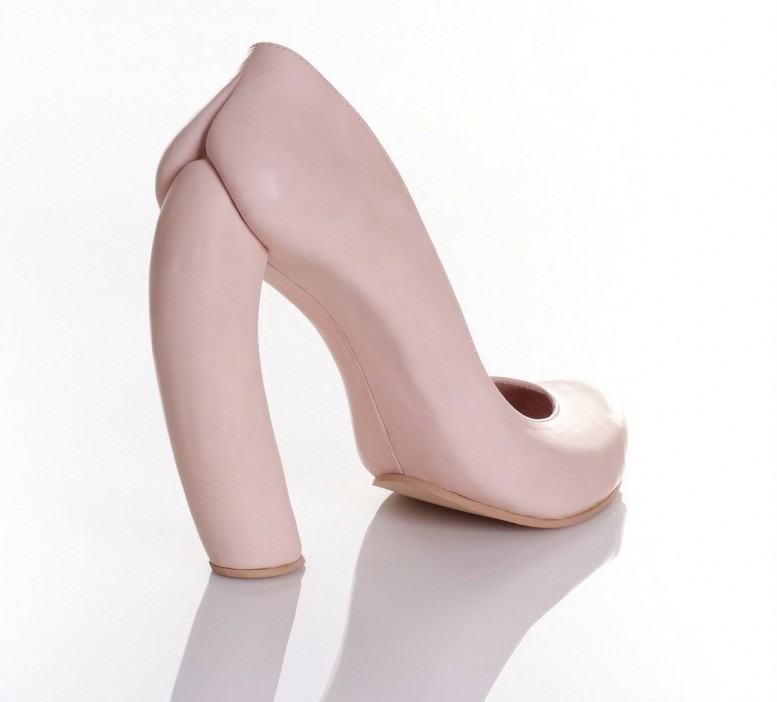Kobi Levi's heels are "wearable sculptures" that verge on fetishistic with an ironic, seemingly dadaist, wit. If Roger Vivier, 20th century French fashion designer credited with revolutionizing the stiletto heel, is considered the "Fragonard of the shoe," than you might call Kobi Levi the the "R. Mutt of the shoe." R. Mutt is of course the name signed on Dada artist Marcel Duchamp's iconic and ridiculous 1917 ready-made sculpture entitled "the fountain" - which was simply a found urinal. Is it genius or asinine? Levi, like Duchamp, is certainly making a statement. Levi's pieces are "...humoristic with a unique point of view about footwear." Throughout the history of civilization, women's fashion has taken turns as bondage and liberation. Levi's constructions might be both, or the handiwork work of a batty sculptor with a foot fetish. From semi-blatant sexual innuendo to slingshots to banana peels, Levi's shoes are cartoonish, bombastic, and in their magical kitschyness there is a beautiful complex brilliance which makes them insanely cool. www.kobilevidesign.blogspot.com
Vija Celmins: Television and Disaster
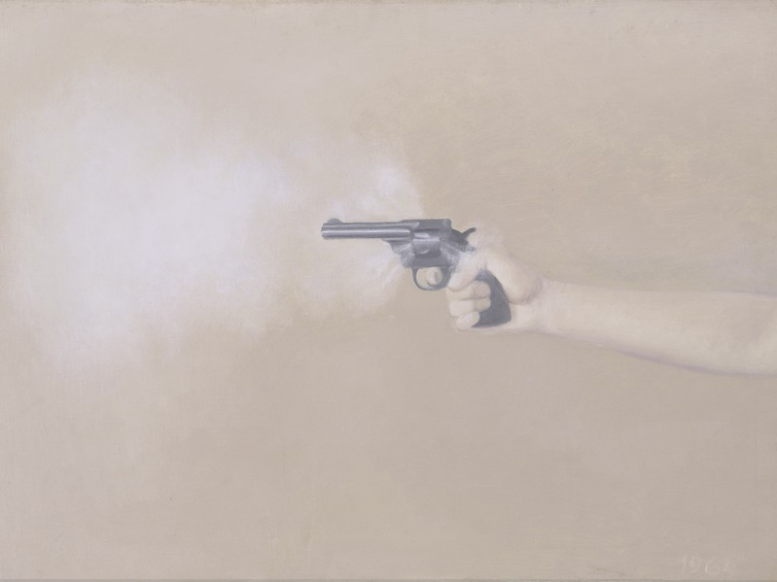 Vija Celmins - Man With Gun
Vija Celmins - Man With Gun
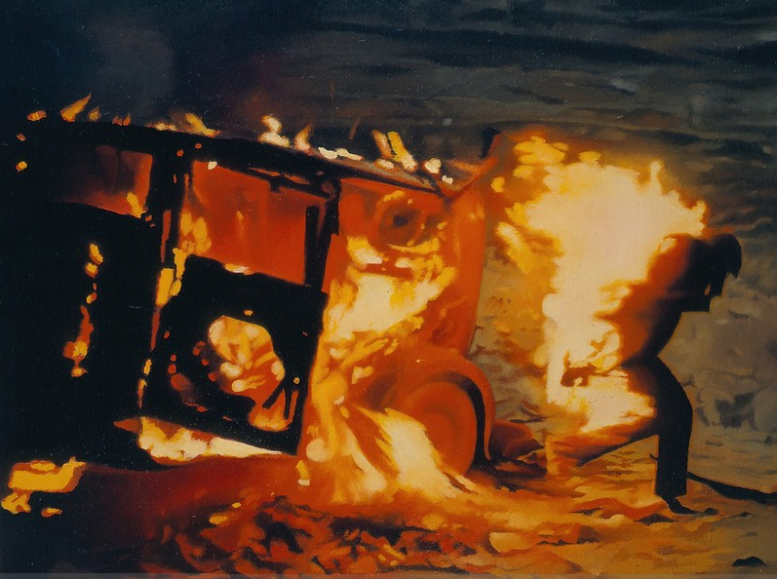 Vija Celmins - Burning Man
Vija Celmins - Burning Man
Painter Vija Celmins, born in 1938 in Riga, Latvia, has lived and worked primarily in New York since 1981. She immigrated to the United States at the age of ten with her family, settling in Indiana. After attending the John Herron Art Institute in Indianapolis, Celmins completed her MFA at the UCLA in 1965.
With a palette focused on the gradations between black and gray, Celmins has been known as a painter of refined representational images of night skies, ocean waves and spider webs. But her first subjects were war planes, smoking guns, and other images of death and disaster. In all of her work, the precisely rendered paintings suggest the importance of patience – the artist’s, in making a precisely rendered painting, and ours, in viewing it.
Organized by the Menil Collection and consisting of approximately 20 paintings and two small sculptures, Vija Celmins: Television and Disaster will be the first exhibition to concentrate on a specific time (1964-1966) and subject matter – including violence in America, U.S. involvement in the Vietnam War, and the news media. While several early images derive from the artist’s own interest in common objects from the studio, such as a television set or a lamp, this exhibition also concentrates on images of war – and televised images of conflict. Celmins’s work from this pivotal time reflects on the moment when the printed image began to give way to the television screen.
This exhibition will travel to the Los Angeles County Museum of Art March 13–June 5, 2011. www.menil.com
Kawa = Flow: The Images of YAMAMOTO MASAO
#1591 160x243m/m
#1554 143x218m/m
Artist Yamamoto Masao describes is work, albeit obscurely and poeticly, with these words: "Kawa = Flow is about the world where we are and the world where we go in the future. Although we seem to be connected continually there is a rupture between us in the present and those that went before us or that come next." "Kawa" means river or more precisely flow. Masao's photographs are like microscopic imagery of the cellular structure of enlightenment; tiny snapshots of those beautiful moments where everything rushes too close and spills over the edge of the mind into pure ecstasy - and everything is crystal clear, if only for a tenth of a millisecond. Oblivion = Eternity. You can see some of Masao's work at the Maerz Gallery in Leipzig February 26th. www.maerzgallerie.com + www.yamamotomasao.com
Hide/Seek: Difference and Desire in American Portraiture
Romaine Brookes "Natalie Barney" 1920
This is the first major museum exhibition to focus on sexual difference in the making of modern American portraiture. “Hide/Seek” considers such themes as the role of sexual difference in depicting modern America; how artists explored the fluidity of sexuality and gender; how major themes in modern art—especially abstraction—were influenced by social marginalization; and how art reflected society’s evolving and changing attitudes toward sexuality, desire, and romantic attachment. This is the last weekend to view Hide/Seek: Difference and Desire in American Portraiture at the National Portrait Museum in Washinton D.C. www.npg.si.edu
Art and Prostitution: Mark Morrisroe
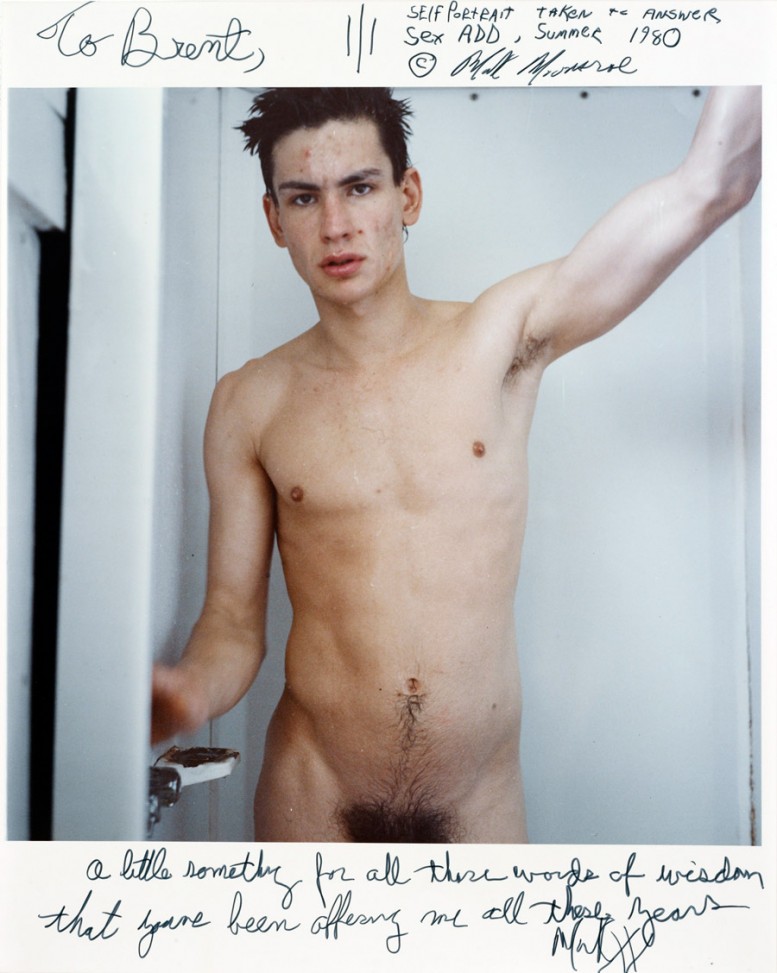
Art is oft born from tragic circumstances. Mark Morrisroe was born in Boston to a drug-addicted mother and left home at age 15. Morrisroe would turn to prostitution to support himself. When he was 17 years old, an unsatisfied John shot him in the back, leaving him with a bullet lodged next to his spine for the rest of his life. The experience had a profound influence on Morrisroe's art, which often incorporated images of young prostitutes and X-rays of his injured chest. Grappling with his identity as a homosexual through photography and performance art, Morrisroe become a seminal figure in the punk scene of Boston during the 1970s and 80s. Mark Morrisroe died in 1980 from complications from AIDS - he was 30 years old. More than twenty years after Mark Morrisroe’s early death, Fotomuseum Winterthur is presenting the first comprehensive survey exhibition on his work. Mark Morrisroe is on view until Feb. 13. www.fotomuseum.ch
Vanity & Salvation
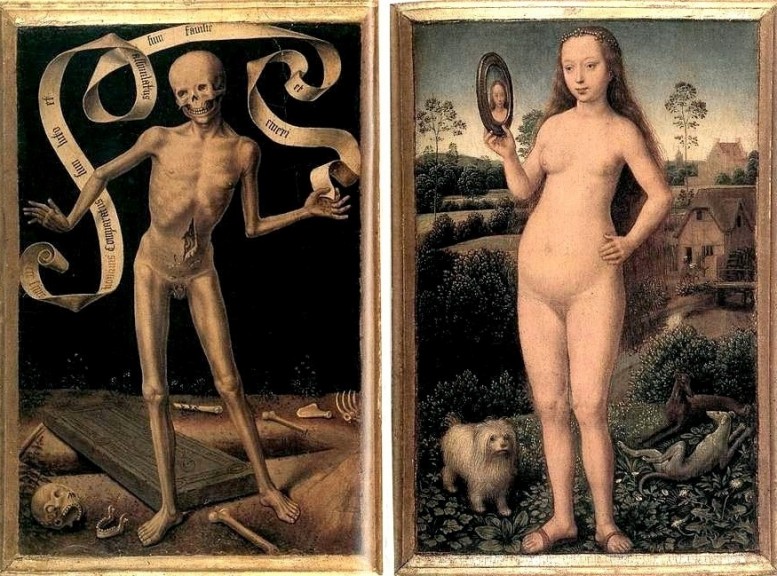 Hans Memling - First Two in "Triptych of Earthly Vanity and Divine Salvation" 1485 - Musée des Beaux-Arts, Strasbourg
Hans Memling - First Two in "Triptych of Earthly Vanity and Divine Salvation" 1485 - Musée des Beaux-Arts, Strasbourg
Flower Myth
 Left: Klee in 1911, by Alexander Eliasberg Right: Flower Myth (1918), Watercolor on pastel foundation on fabric & newsprint mounted on board
Left: Klee in 1911, by Alexander Eliasberg Right: Flower Myth (1918), Watercolor on pastel foundation on fabric & newsprint mounted on board
 Paul Klee in His Studio
Paul Klee in His Studio
"I cannot be grasped in the here and now. For I reside just as much with the dead as with the unborn. Somewhat closer to the heart of creation than usual. But not nearly close enough." Paul Klee
Artist: Devendra Banhart
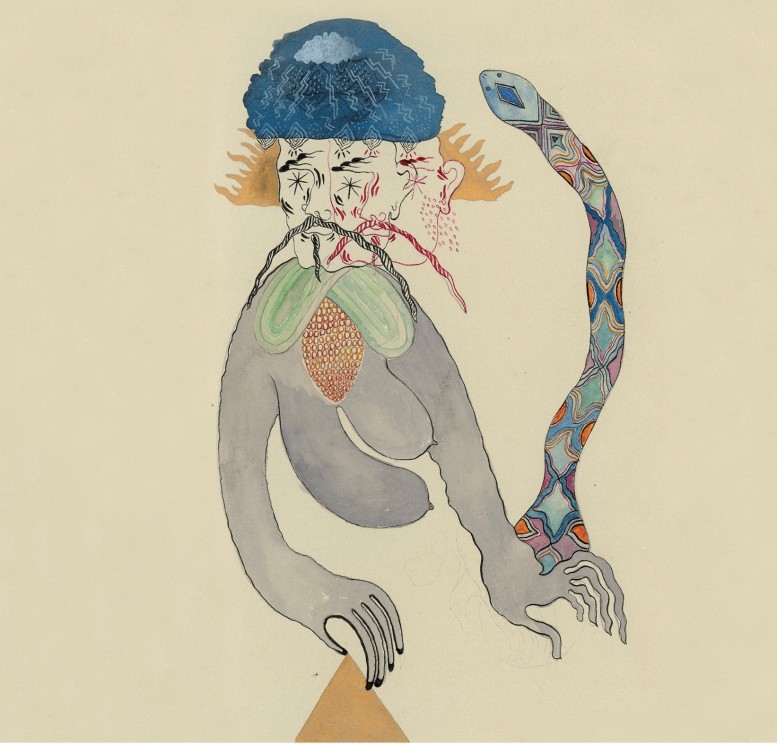
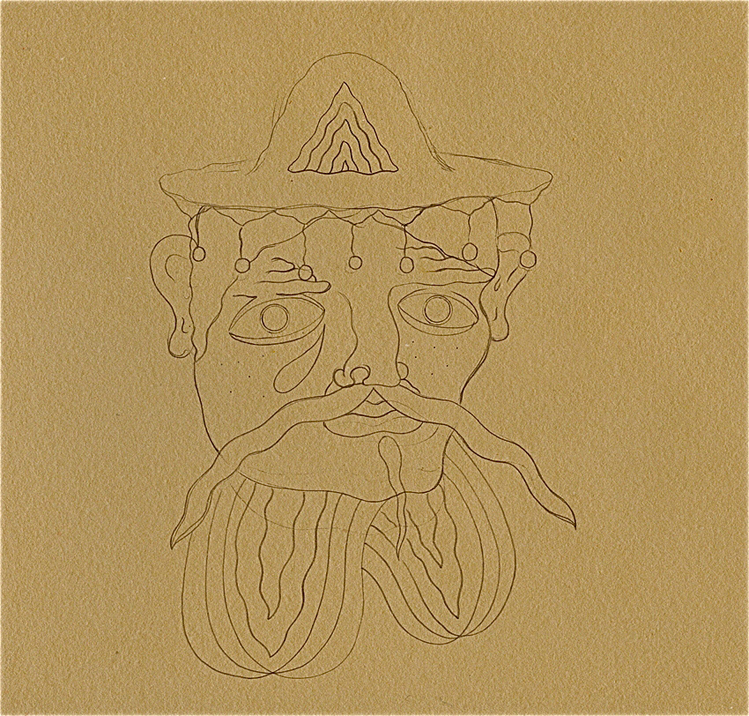
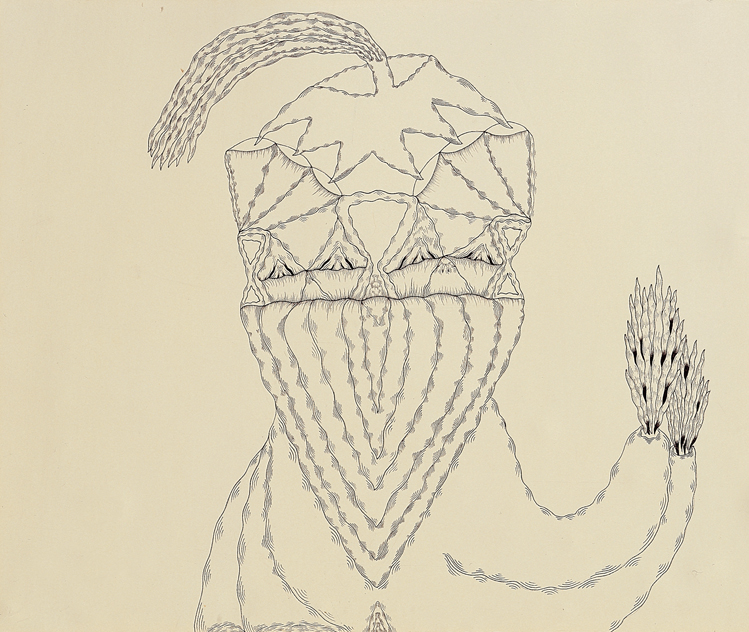
Artist Devendra Banhart picks up where native cave painters left off 20,000 years ago. There is a shamanistic catharsis in the pure forms, lines, and colors against stark simple backgrounds that give Banhart's art an almost talismanic quality. I should also say that there is a common misconception that cave art is primitive - the Lascaux cave drawings, for instance, (which were discovered in 1940 by four teenagers and their dog in southwestern France), upon closer observation, are actually incredibly complex. For example, they have found evidence of mathematical star charts, dimensional perspective not seen in art for centuries and intricate spiritual iconography. Inside Banhart's art one can find the same cosmic complexity. Banhart's art is a return to the id - as if there was ever a magic tab to dissolve on your tongue to return you there. Banhart has been more widely recognized in other mediums, but his art has touched hallowed museum walls. In 2004 Banhart exhibited exclusively next to the art of Paul Klee, at the San Francisco Museum of Modern Art. Banhart has also had many solo shows in galleries around the world. The newest revelation is that Banhart has bought some tattoo supplies and has started tattooing his friends and family. Banhart's tattoos are brilliant little mementos that don't stray too far from the style of his artwork. They hover moderately within the confines of traditional tattooing - albeit, with a lot less shading. His tattoos are currently an altruistic enterprise, and he has graciously offered to give me one the next time I stop through his neck of the woods. Coming up in March Banhart will be having a show in Milano along with Adam Tullie of Cavern Collection and bonkers conceptual artist Keegan McHargue. More info about the show here.
Text by Oliver Maxwell Kupper for Pas Un Autre
If You Don’t like the Picture, Blame the Ass
For over a century, millions of Americans have put on sombreros and posed for tourist photographs on top of donkeys in the border city of Tijuana, Mexico. For almost as long, one of the greatest urban legends in all of California history has been the Tijuana donkey show, the much-rumored, often-referenced, but never proven south of the border sex show that is perpetually re-invented in American high school locker rooms. The Donkey Show explores the border’s intersection of myth and reality through a blend of over 200 rare tourist photographs, vintage nightlife ephemera, and pop songs born of American myths of Tijuana. The exhibition is guest curated by cultural anthropologist and graphic design historian Jim Heimann and author and music critic Josh Kun. On view at the Santa Monica Museum of Art until April 16th, 2011. www.smmoa.org
Our Future is in the Air
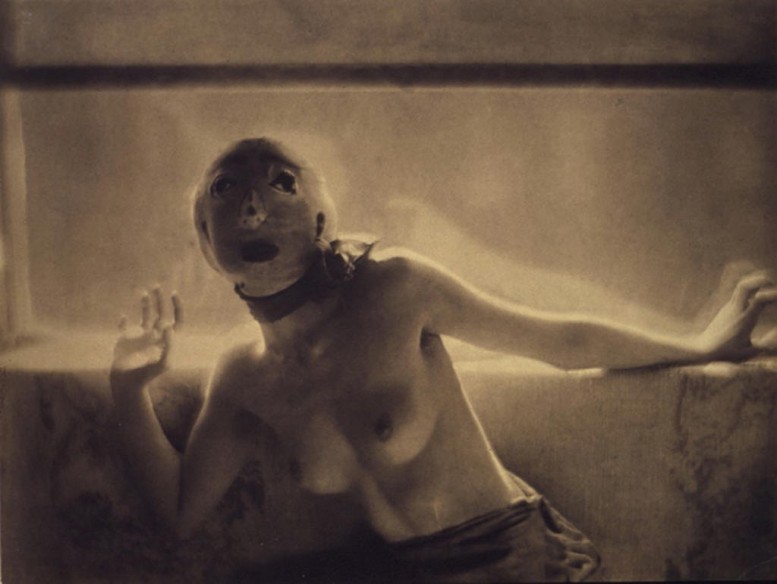 Adolph de Meyer 'Dance Study' 1912 - Alfred Steiglitz Collection
Adolph de Meyer 'Dance Study' 1912 - Alfred Steiglitz Collection
Adolph de Meyer - who would become Vogue magazine's first official fashion photographer, 1913 - photographed the dancer Ninjinsky and other members of Sergei Diaghilev's troupe when l'Apres Midi d'Un Faune was presented in Paris in 1912. It has been suggested that the above photograph, the only nude by de Meyer, has some connection to the Russian ballet, but if so, remains mysterious.
It has been commonly remarked that the 20th century didn't really begin until 1910. The above photograph and a selection of other incredible photographs from the 1910s are on display at the Metropolitan Museum of Art in New York for the exhibit "Our Future Is In The Air": Photographs from the 1910s. On view till April 10, 2011.
Can't Buy Me Revolution
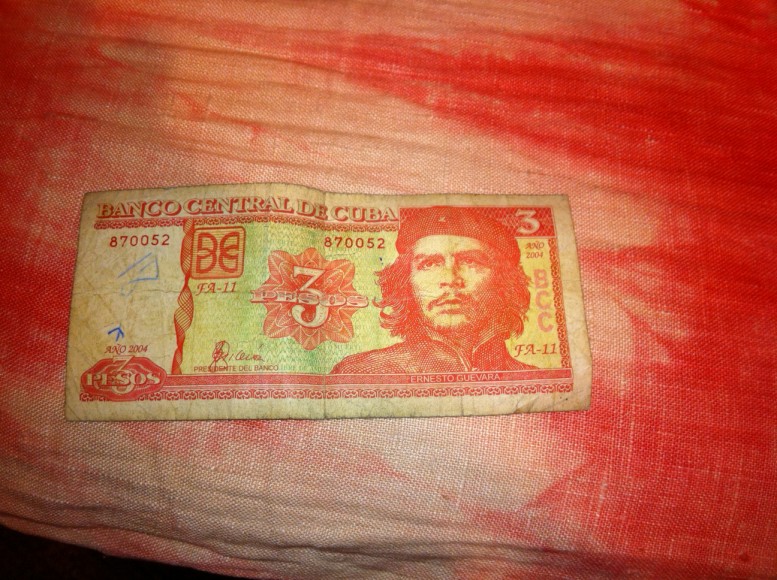 Image by Fredrica Duke
Image by Fredrica Duke
Lure of Images: John Strezaker
John Strezaker 'Mask XXXV' 2007
British artist John Stezaker is fascinated by the lure of images. Taking classic movie stills, vintage postcards and book illustrations, Stezaker makes collages to give old images a new meaning. By adjusting, inverting and slicing separate pictures together to create unique new works of art, Stezaker explores the subversive force of found images. Stezaker’s famous Mask series fuses the profiles of glamorous sitters with caves, hamlets, or waterfalls, making for images of eerie beauty. This first major exhibition of John Stezaker offers a chance to see work by an artist whose subject is the power in the act of looking itself. With over 90 works from the 1970s to today, the artist reveals the subversive force of images, reflecting on how visual language can create new meaning. John Stezaker is organized by the Whitechapel Gallery, London, and Mudam, Luxembourg - on view till March 18, 2011.
Objet d'Art: Cupid's Lie
DAMIEN HIRST, Cupid's Lie, Gold
To inaugurate the Hong Kong exhibition space, Gagosian Gallery is pleased to present “Forgotten Promises,” an exhibition of new paintings and sculptures by Damien Hirst. Forgotten Promises - Jan 18 - Mar. 19, 2011 at the Gasgosian Gallery, Hong Kong.
Exotic Regrets by Aoi Kotsuhiroi
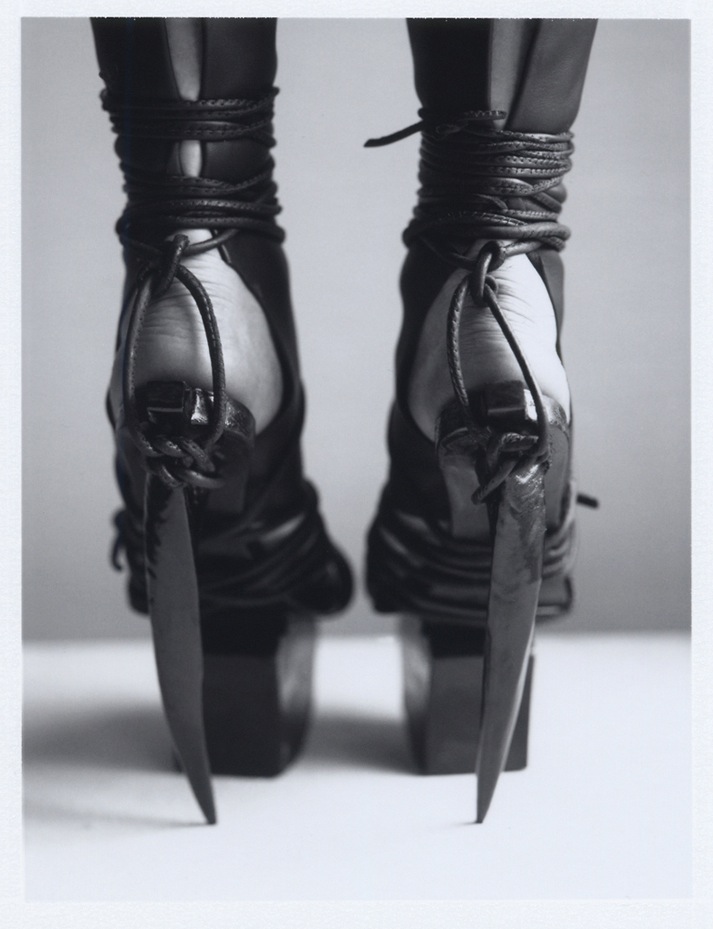
I received an image over the weekend of the fascinating first chapter of sartorial sculptor, poet, and conjurer Aoi Kotsuhiroi's new collection entitled Exotic Regrets. As in past collections, Kotsuhiroi, based in the South of France, releases imagery of her new collections in chapter's to express gravity and anticipation. www.aoikotsuhiroi.com
French Lit 101
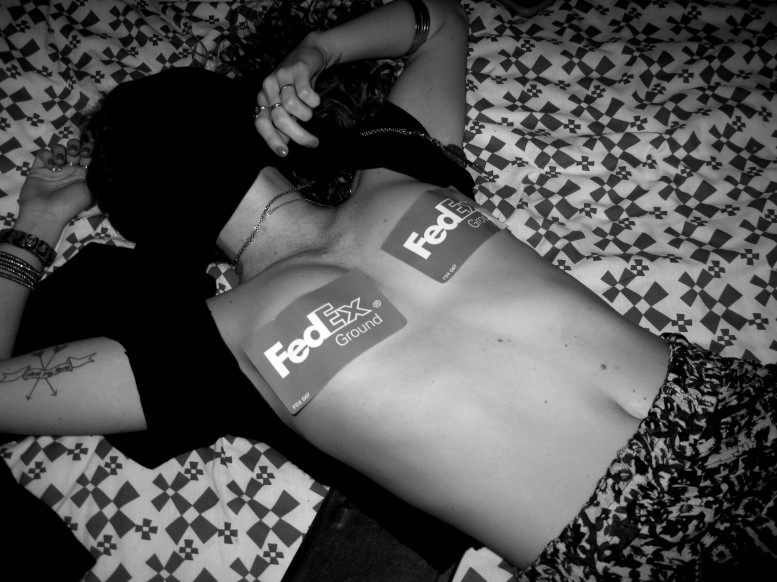

photography by Oliver Maxwell Kupper
Big Shots
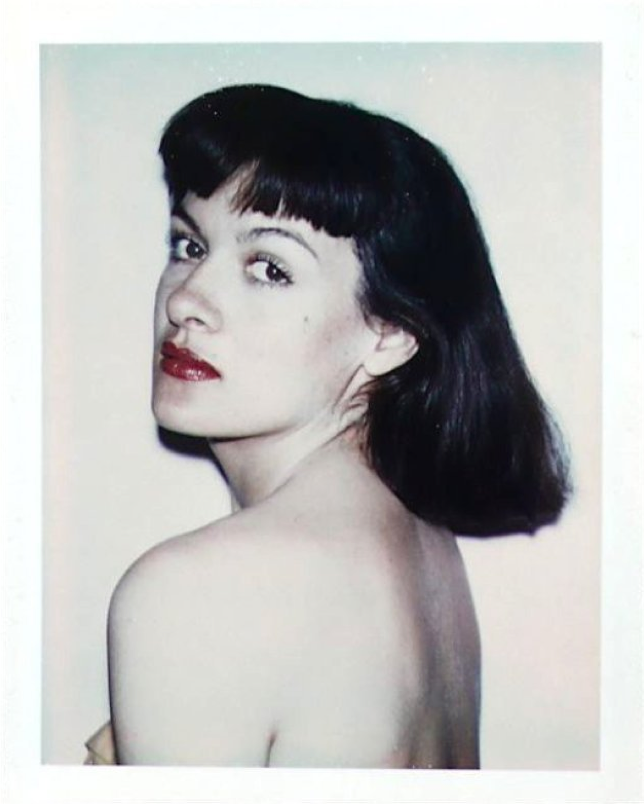 Paloma Picasso by Andy Warhol
Paloma Picasso by Andy Warhol
"Big Shots: Andy Warhol Polaroids of Celebrities" provides a look at a lesser-known but seminal body of work by the artist who was dazzled by celebrity and found much of his inspiration in the photographic image. Comprised of over thirty Polaroids of subjects ranging from Debbie Harry to Yves St. Laurent and Giorgio Armani to Yoko Ono, the pictures were taken between 1970 and 1986 on Warhol's favorite camera - the Polaroid Big Shot. Created by Polaroid for practical purposes like the quick creation of I.D. cards and passport pictures, the camera's fixed focal length and point-and-shoot mechanism were perfect for the snapshot-loving artist. www.danzigerprojects.com
Mannerism Versus Modernism
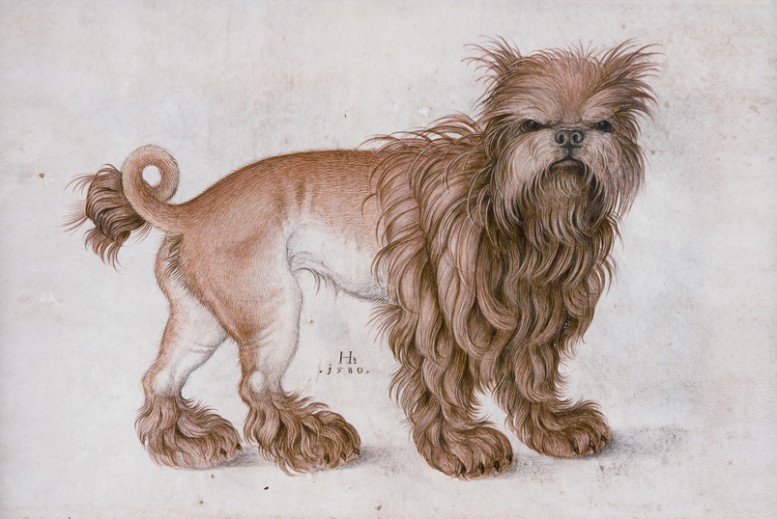 Hans Hoffmann, An Affenpinscher (detail), 1580, watercolor and gouache on vellum. Kasper Collection, New York.
Hans Hoffmann, An Affenpinscher (detail), 1580, watercolor and gouache on vellum. Kasper Collection, New York.
The Morgan Library & Museum presents over one hundred drawings and photographs from the collection assembled by American fashion designer Herbert Kasper—known simply as Kasper. The collection, exceptional for its distinctive character and superb quality, is being exhibited to the public for the first time. Mannerism and Modernism: The Kasper Collection of Drawings and Photographs is being held at the Morgan Library and Museum in New York City through May 1st, 2011.
Folk Art: The Clay Skulls of James "Son Ford" Thomas
 Photo by William Ferris, 'James "Son Ford" Thomas and Clay Skull, Leland, 1971' Collection of the Ogden Museum of Southern Art
Photo by William Ferris, 'James "Son Ford" Thomas and Clay Skull, Leland, 1971' Collection of the Ogden Museum of Southern Art
Grave digger, blues musician, and dark, mystic soul of the south, James "Son Ford" Thomas made skulls from clay collected at the banks Mississippi's Yazoo River, often using authentic human teeth. His art mirrored, or was a catharsis, from the constant nearness of death at his job digging graves. "We all end up in the clay" was Thomas' oft quoted philosophy on life. The cemetery was probably a great place to pick up teeth too. You can find his work at various blues museums throughout the south.
Text by Oliver Maxwell Kupper
Gustave Courbet's 'The Woman in the Waves'
The Woman in the Waves (The Bather) 1868
Another painting that struck me like lighting in the New York Metropolitan Museum of Art.
For Your Pleasure
At this years Art Rotterdam TORCH gallery will offer a stage for a special performance and presentation of the project Almost 18+ (for your pleasure) by TINKEBELL. These works display a wryly ironic commentary on the contrast between the worlds of pornography and public debate. Seated in a chair designed by renowned designer Marcel Wanders she will devote her time at the fair embroidering lovely flowers, butterflies and birds on images of humiliated teenage girls. More info here.

